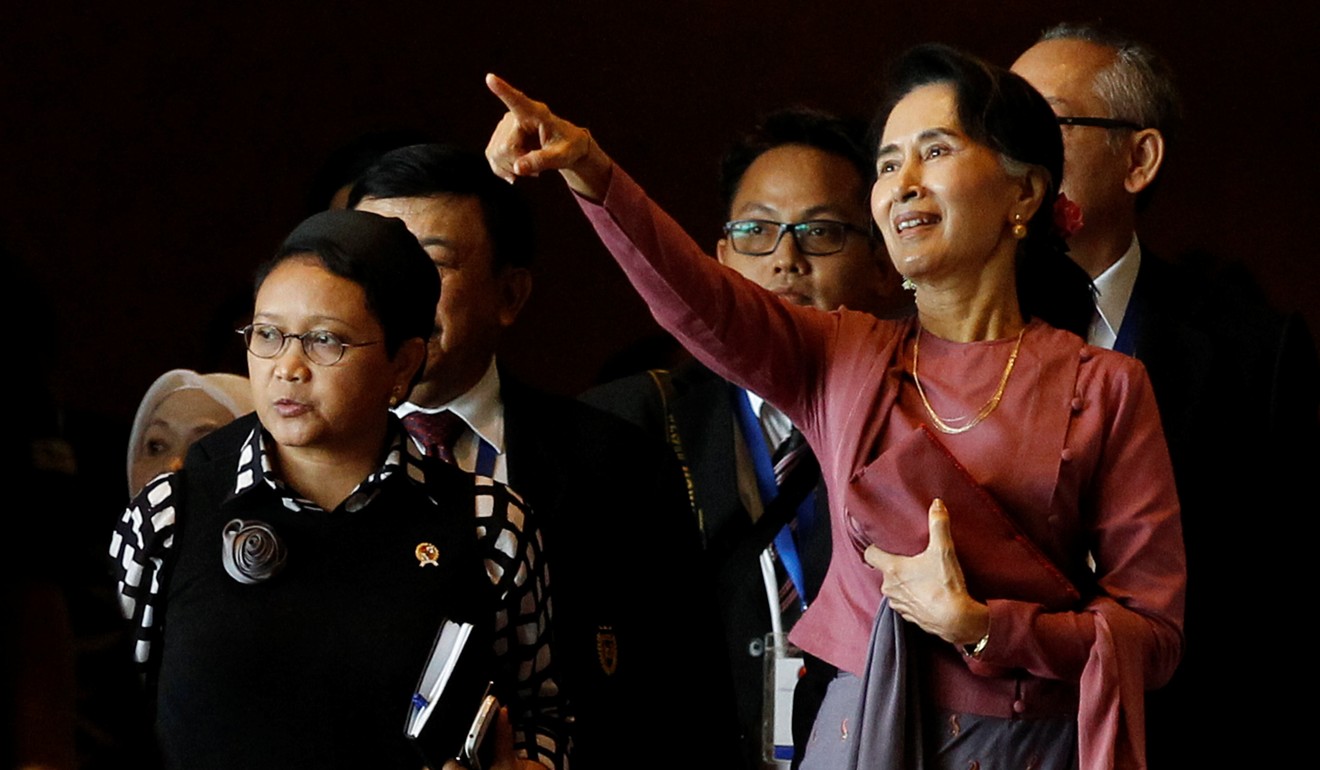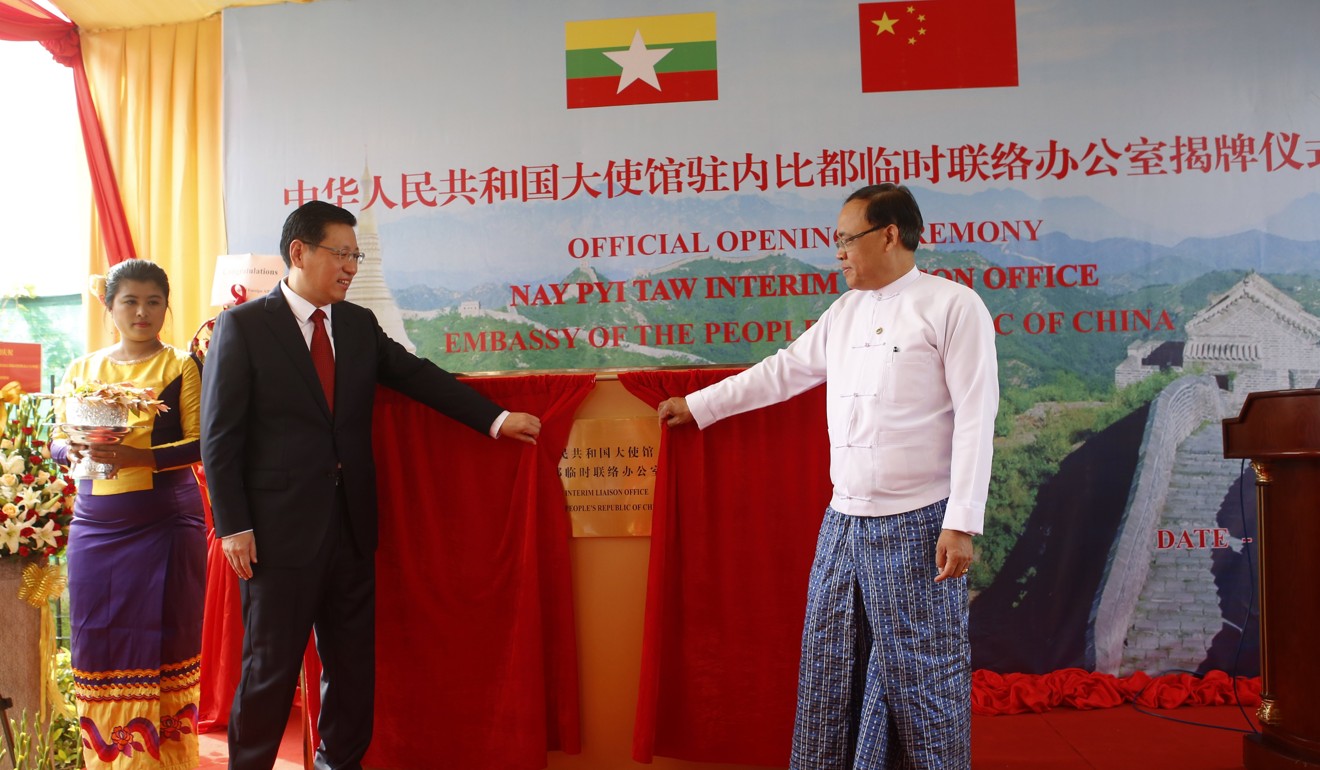How Myanmar’s understanding of China is paving the way for economic success
Houmin Yan and Da Hsuan Feng say thanks to their knowledge and understanding of China and the Chinese, the people and government of Myanmar are better placed than their Asean peers to benefit from collaboration with Beijing, particularly in the belt and road scheme

Hong Kong Chief Executive Carrie Lam Cheng Yuet-ngor’s presence at the 14th World Chinese Entrepreneurs Convention in Yangon was a timely reminder that, among Asean members, Myanmar is probably the most proactive in participating in China’s “Belt and Road Initiative”.
There are many reasons to say this. First, among all the countries that could help Myanmar grow, China appears to fit the bill best.
For nearly five decades, Myanmar was essentially closed to the outside world, so its basic infrastructure severely lags behind the more advanced members of the Association of Southeast Asian Nations, such as Thailand, Malaysia and Singapore.
Despite significant affluence in major metropolitan areas such as Yangon, overall, the country has a weak services sector and depends heavily on imports for much of its industrial needs, such as steel, concrete and even daily necessities.
The present government is aware of the country’s shortcomings, and had sought the assistance of Western nations, such as the US, Japan and those in Europe. Yet, despite many promises from these advanced countries, what has been delivered in the past few years has proved quite disappointing.
Carrie Lam opens Chinese Entrepreneurs Convention in Yangon
As Myanmar began its political transformation, the government devised an ambitious strategy to revamp its economy. It wanted to upgrade its infrastructure, develop weak industries and, of course, create significant job opportunities.
Once it became obvious there was an “assistance gap” with the Western nations and Japan, while Beijing was proactively engaging in the belt and road, Myanmar turned its attention to China.
Second, over the past two decades, China has been, with respect to technology and mindset, ready to work with other countries for mutual benefit. With the belt and road, it has become more so.
Even before Myanmar’s political transformation, Chinese industries, without any discernible strategy and mostly on a small scale, already occupied some 50 per cent of the weak Myanmese market. So the Chinese were already well prepared to collaborate with Myanmese partners, and did not have to start from scratch.

China today has surged to become the global leader of the so-called omnipresent economy. In a nutshell, this economy is the result of the amalgamation of the mobile network and smart devices with built-in security.
It is probably not an exaggeration to say that the belt and road is greatly assisted by, if not largely standing on, the omnipresent economy platform.
It is noteworthy that the general population of Myanmar, especially those of Chinese descent, are fast learners about the ways of this economy, especially people in major cities such as Yangon. Furthermore, Myanmar intends to bring into the country the most advanced Chinese technologies, the most advanced Chinese products, as well as Chinese talent.
There is another interesting dimension worth mentioning, and it relates to metropolitan development and planning. Strategists in Myanmar are closely examining the Chinese city planning and transformation experience. China today has some 277 smart cities, with three more in the pilot stage. In fact, next to Yangon, it plans to build a “Neo-Yangon” whose underlying architecture will be based on the Chinese experience of smart urban design.
The people of Myanmar seem to have a comprehensive grasp of Chinese culture, history and ways
Third, despite “five decades of isolation”, the people of Myanmar seem to have a more comprehensive, even deeper, grasp of Chinese culture, history and ways than those from many Asean nations. It is not unusual to hear the Myanmar public quote ancient Chinese poetry in everyday conversations. They also seem to be fully aware of what is happening in China and what the Chinese leadership is saying. Also, there is something unusual about Myanmar’s television: it carries many CCTV channels.
In other parts of the Asean, both CCTV4 and CGTN are available, but usually not more than that. However, in Myanmar, most CCTV channels are available, especially CCTV2, the counterpart of America’ s CNBC, whose mission is to inform viewers about the Chinese economic and financial situation. Access to CCTV2 keeps the Myanmese well informed about the development of China.

Fourth, the way the people of Myanmar do business seems to be “Chinese-like”, that is, they prefer “to get something for nothing”.
For example, when a Myanmese enterprise requires certain Chinese technologies or products, since it lacks capital, payment will only be made after profits are made, several years later.
Myanmar [needs] to find a partner with whom a win-win scenario can be created and sustained
There are two forms of payment. It could be either direct payment with interest to the Chinese enterprise, or it could be via debt to equity – in the form of stocks for the Chinese company. Once the enterprise receives the Chinese products and technologies, it will obtain land from the Myanmese government for real estate development, as well as social services. In this way, it is a win for the Chinese enterprise, a win for the Myanmese enterprise and a win for the government of Myanmar.
International geopolitics, especially in this part of the world, is being transformed rapidly and, as many would say, violently. Myanmar, in wanting to lift itself up in this landscape, understands that it can do so only if it is able to find a partner with whom a win-win scenario can be created and sustained.

Once Myanmar realised the Western and Japanese experiences were obviously not viable, over the past several years it has realised it can learn about and from China, and it seized the moment for mutual benefit.
Unquestionably, Myanmar still has a long way to go to revamp its economy. But it appears that by understanding China so clearly, and becoming part of the belt and road architecture, it could be a case study for Asean in understanding China before interacting with it.
With that, we are sure there is a bright light at the end of the tunnel for Myanmar.
Houmin Yan is dean and chair professor at the College of Management, City University of Hong Kong. Da Hsuan Feng is a senior fellow at the Institute of Advanced Studies, Nanyang Technological University